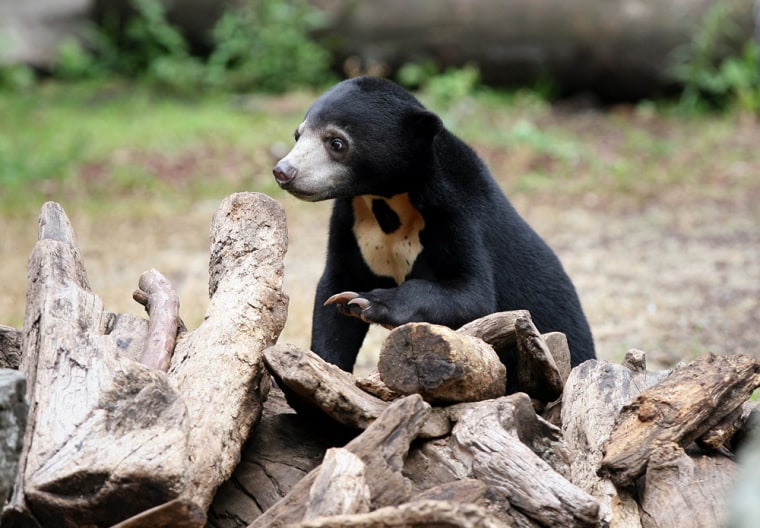The world's smallest bear on Monday was added to a list of wildlife that could face extinction, joining five of the world's eight bear species already classified as in danger.
Experts with the World Conservation Union took the step of adding the sun bear, whose habitat stretches from India to Indonesia, because of deforestation and poaching in its Southeast Asian home.
The sun bear was classified as "vulnerable" — one step below "threatened" and two below "endangered."
"We estimate that sun bears have declined by at least 30 percent over the past 30 years and continue to decline at this rate," said Rob Steinmetz, a bear expert with the Geneva-based group, which is known under its acronym IUCN.
10,000 estimated
The group estimates there are little more than 10,000 sun bears left, said Dave Garshelis, co-chair of the IUCN bear specialist group.
The bear, which weighs between 90 and 130 pounds, is hunted for its bitter, green bile, which has long been used by Chinese traditional medicine practitioners to treat eye, liver and other ailments. Bear paws are also consumed as a delicacy.
Another threat comes from loggers, who are destroying the sun bear's habitat, Steinmetz said.
Thailand is the only country to have effectively banned logging and enforced laws against poaching, allowing the sun bear population to remain stable there, Garshelis said.
Other vulnerable bear species are the Asiatic black bear, the sloth bear on the Indian subcontinent, the Andean bear in South America and the polar bear.
The re-assessment of the sun bear's situation will be reflected in IUCN's Red List of Threatened Species, a comprehensive inventory of some 41,000 species and subspecies compiled by a network of experts around the globe.
Black bears doing well
The brown bear and the American black bear are in a lesser category of threat, IUCN said.
"The American black bear is actually doing quite well," said Garshelis, adding that its population is increasing in most parts of Canada, the United States and Mexico.
There are an estimated 900,000 American black bears in the three countries, more than double the number of all the other bear species combined, according to IUCN.
The brown bear is well protected in North America and Europe and therefore able to expand in certain areas, he said. But in some countries of South Asia, including Pakistan, India and Nepal, there are only tiny numbers of brown bears left, he added.
The only bear presently considered endangered is the giant panda, of which fewer than 3,000 are estimated to survive. That status remains unchanged despite China's conservation efforts, including the creation of nearly 60 panda reserves, a ban on logging and widespread reforestation.
"It would be unwise to assume that in less than 10 years under the new habitat improvement policies in China (the) panda population could have dramatically increased," Garshelis said.
Australia's koala bear, which despite its name is not a bear but a marsupial, is considered "near threatened."
In 2006, the polar bear was listed as vulnerable on the IUCN Red List. Technically a marine mammal, the polar bear is distinct from the other land-based bears.
